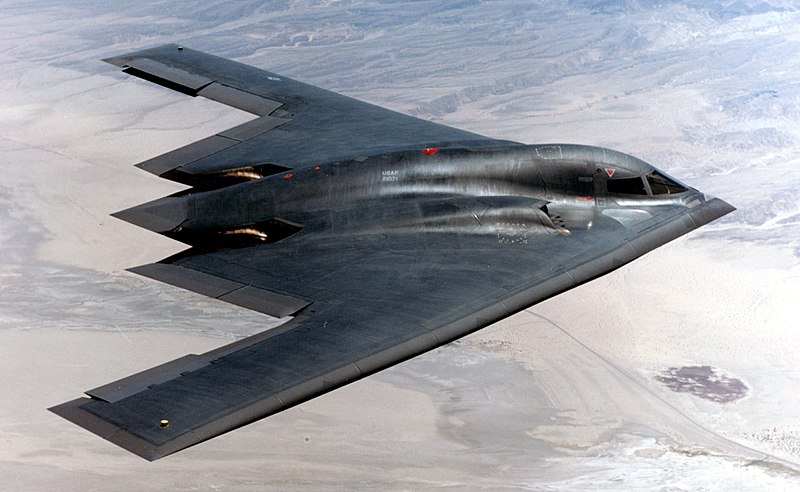 |
| B-2 Spirit Bomber (Wiki Info - Image: Wiki Commons) |
By Zachary Keck
Anti-access/area-denial capabilities will not impact the nuclear mission of America’s bomber fleet.
The past week or so has seen the U.S. send a number of nuclear warnings to Russia in Europe. Last week, the U.S. Air Force (USAF) announced it was temporarily deploying three B-52 nuclear-capable bombers. Then, this week, the USAF announced it was sending two additional B-2 nuclear-capable stealth bombers to Europe. Both deployments were portrayed as routine training exercises. Given the crisis in the Ukraine, and Russia’s stepped up nuclear training, it would be foolish to accept the USAF at its word.
The Ukraine crisis is more likely the latest example of the U.S. bomber fleet’s utility to America’s extended deterrence mission. Last year, during one of North Korea’s epic temper tantrums, the U.S. also deployed B-52s to South Korea for “training purposes,” followed by a flyover by a pair of B-2 stealth bombers. The purpose of the fly-over mission, according to U.S. military officials at least, was to demonstrate “the United States’ ability to conduct long range, precision strikes quickly and at will.” Similarly, last November the U.S. used a pair of B-52s to challenge China’s newly announced Air Defense Identification Zone (ADIZ) in the East China Sea.
A new report by (PDF) the Congressional Research Service (CRS) argues that the aging bombers’ ability to carry out this mission is waning. It notes that 21st century adversaries’ growing anti-access/area-denial capabilities threatens to undermine existing bombers’ ability to reach their targets.
“As potential adversaries acquire 21st century defense systems designed to prevent U.S. access to the global commons (sea, air, space, and cyberspace) and to limit U.S. forces’ freedom of action within an operational area, the ability of these Cold War era bombers to get close enough to targets to be effective will continue to deteriorate,” the CRS report, written by Jeremiah Gertler, states.
Read the full story at The Diplomat
